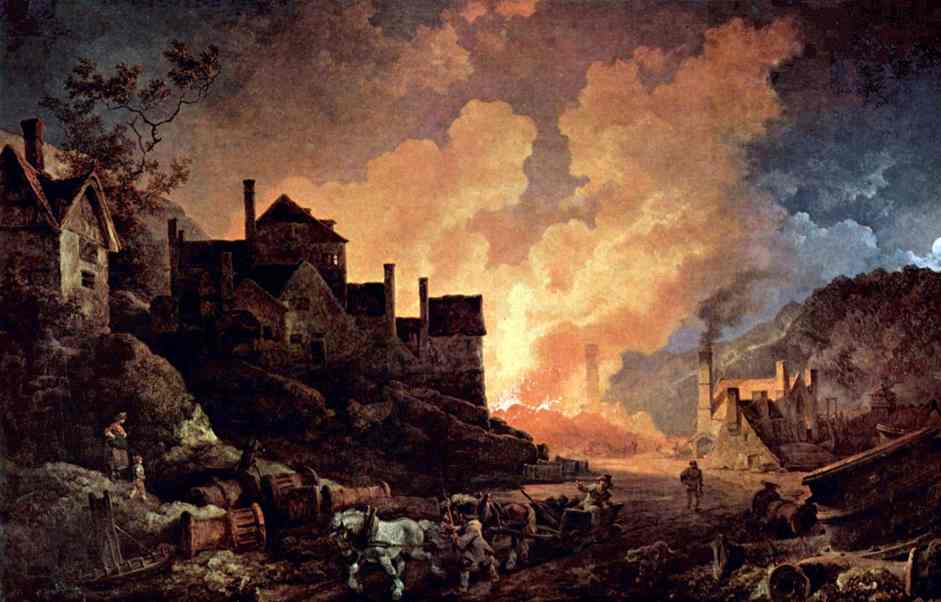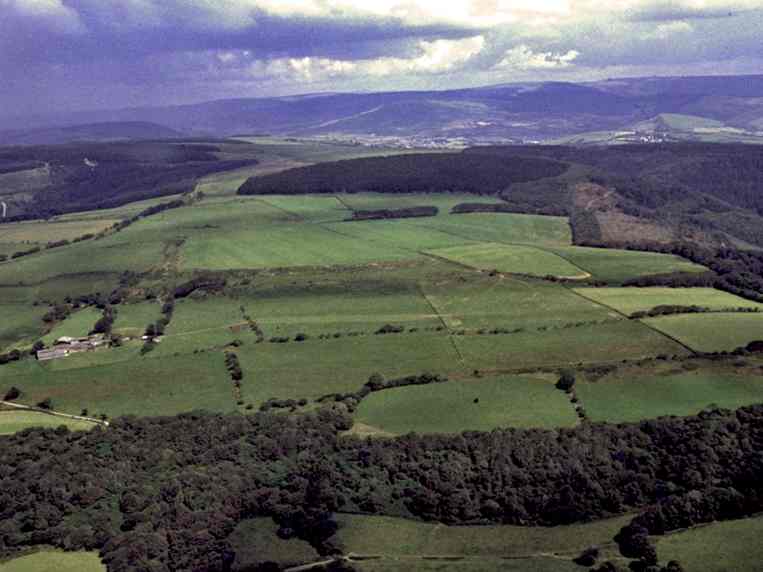Economic, Political and Social Processes of Modernisation since the 18th Century
Die hier vorgestellte Unterrichtseinheit basiert auf dem Unterricht von Dr. Jan Kulok aus Stuttgart. Er hat seine Materialien freundlicherweise dem Landesbildungsserver zur Verfügung gestellt. In der vorliegenden Unterrichtssequenz wird für die Kursstufe die Lehrplaneinheit "Veränderungen in Wirtschaft und Gesellschaft durch die Industrialisierung" in englischer Sprache präsentiert. Die Inhalte der Einheit wurden zum Teil auf den englischen Sprachraum hin angepasst und sollen lediglich Vorschläge zu einer bilingualen Umsetzung darstellen.

Centennial Mirror: the United States after a 100 years
Foto: Wikipedia Commons Quelle
Folgende Kompetenzen sollen durch diese bilinguale Einheit abgedeckt werden:
The students can apply the term ‘modernisation’ and can both compare and evaluate different theories of modernisation.
- The students can analyse and evaluate the Industrial Revolution in terms of a process that has brought about great social and economical changes in history.
- The students can compare the developments of the industrialisation in different European countries and in North America with their advantageous and disadvantageous factors.
- The students can study and evaluate the changes in the fields of technology, of labour and in the environment and present their results.
- The students can evaluate different approaches to solving the ‘Social Question’ (i.e. the social problems resulting from the Industrial Revolution) and their effects.
Dates and terminology in English:
foundation of labour parties since 1863; social legislation since 1883; the social papal encyclical ‘Rerum Novarum’ of 1891; agricultural revolution; Industrial Revolution; key / neuralgic industries (‘Schrittmacherindustrien’); economic / classical liberalism; communism; socialism; big business; Great Depression; New Deal

Philipp Jacob Loutherbourg the Younger, Coalbrookdale at Night, 1801
Foto: wikipedia commons Quelle
Vorschlag für die Planung der Unterrichtseinheit
1. Concepts of modernisation
- AB 1a: The Centennial Mirror
- AB 1b: What is modernization? – Attempts at a definition
- AB 1c: The essential aspects of Modernization (Alberto Marinelli)
2. Feeding increasing numbers: was the Agricultural Revolution market- or science-driven?
3. Th. R. Malthus’s theory about population increase: a question of morality or of mathematics?
4. The Industrial Revolution in Britain: many factors steaming ahead and combine
- AB 4a: Coalbrookdale at night
- AB 4b: The key contributing factors of the Industrial Revolution in Britain 1750-1850
- AB 4c: Factors providing the basis for Industrial Revolution
- AB 4d: The Industrial Revolution (acc. to J. Black)
- AB 4e: The Industrial Revolution (acc. to St. Kreis)
- AB 4f: The Origins of the Industrial Revolution
5. A. Smith’s ‘The Wealth of Nations’: a gospel of free trade?
- AB 5a: Extracts of Adam Smith, Wealth of Nation
- AB 5b: About the importance of Adam Smith, Wealth of Nation
6. David Ricardo: ‘classical liberalism’ revisited/confirmed?
- AB 6a: Classical Liberalism – as propagated in Britain
- AB 6b: David Ricardo, The Iron Law of Wages
- AB 6c: Ricardo, The Iron law of wages (in brief)

Enclosures as they can be seen untilo today
Foto: © GGAT HER Charitable Trust/Cadw
7. The industrialisation of Germany compared to British industrialisation
- AB 7a: The Industrial revolution in Germany
- AB 7b: The Prussian Reforms
- AB 7c: Relative Levels of Industrialization 1750-1900
8. The Industrialisation of the US – a special case?
9. The Gilded Age of Big Business and US-American Progressivism: how gilded – how progressive?
10. Dickensian blight or progress? The social effects of the Industrial Revolution; pauperism, pollution
- AB 10a: Blake, Jerusalem
- AB 10b: Blake, The Chimney Sweeper vs. Jerusalem
- AB 10c: Global Fossil Carbon Emissions
- AB 10d: Victorian London (engravings by Gustav Doré)
- AB 10e: Environmental History: The Industrial Age
- AB 10f: Engels, The Condition of the English working class
- AB 10g: Gaskell, Mary Barton

Glidden Barbed Wire manufactured by Isaac L. Ellwood in DeKalb, Ill. Presumed 1880s advertising poster.
Foto: wikipedia commons Quelle
11. Social protests and reformers: King Ned, New Lanark and the Chartists
- AB 11a: The Luddites
- AB 11b: Chartism
- AB 11c: Robert Owen and New Lanark
- AB 11d: The History of the British Labour Party
- AB 11e: No revolution in Great Britain
12. Social revolutionaries: Marx and early socialism
- AB 12a: The Communist Manifesto
- AB 12b: The Theories of Marx and Engels
- AB 12c: Marxism, the updates?
13. Ideas to alleviate the hard conditions of the working class both Christian and patriarchal: good answers to the ‘social question’?
14. The Crash of 1929 and the New Deal
- AB 14a: A. Yvon, The Genius of America
- AB 14b: Interwar US Economic Policies
- AB 14c: Interwar US Economic Policies (in brief)
- AB 14d: New Deal posters
- AB 14e: The Four Freedoms (Pictures)
- AB 14f: The Four Freedoms (Text)
Additional Material: Advertisements
Alle vorherigen Arbeitsblätter können Sie auch als zip-Datei (25 MB) herunterladen.
Alle Materialien gehen zurück auf Ideen und Anregungen von Dr. Jan Kulok, RP Stuttgart.
Herausgeber: Landesbildungsserver Baden-Württemberg
Quelle: https://www.schule-bw.de
Bitte beachten Sie eventuell abweichende Lizenzangaben bei den eingebundenen Bildern und anderen Dateien.



